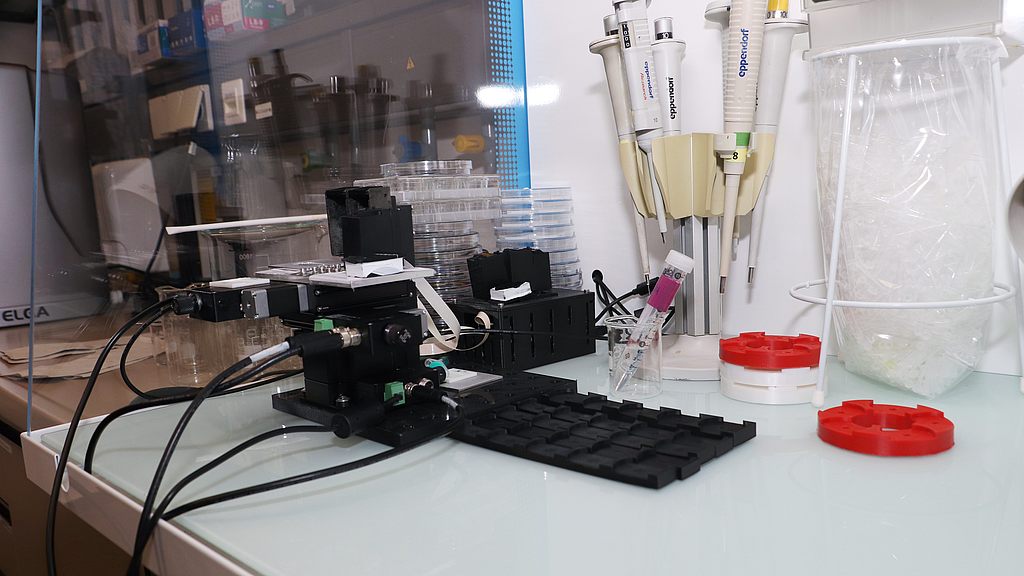Thermogravimetric analysis
Thermogravimetric analysis (TGA), also known as thermogravimetry, is an analytical method in which the change in mass of a sample is measured as a function of temperature and time. For this purpose, the sample is heated in a small crucible made of refractory, inert material (e.g. platinum or aluminum oxide) in a furnace to temperatures up to 1600 °C. The sample holder is connected to a microbalance. The sample holder is coupled to a microbalance, which registers the changes in mass during the heating process. A thermocouple close to the crucible measures the temperature. Modern TGA instruments allow adjustment of the final temperature, heating rate, gas flow or similar via a connected computer. During analysis, the sample chamber is purged with various gases as needed. Mostly pure nitrogen is used to avoid oxidation. However, in some cases purging is also done with air, oxygen or other gases. During heating, the sample can release volatile components to the environment through decomposition reactions or evaporation, or absorb reactants from the environment, e.g., through oxidation. The decrease or increase in weight and the temperature at which the change in weight occurs can be specific to a sample under investigation. From this, conclusions can be drawn about the composition of the substance.
